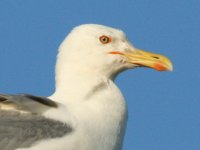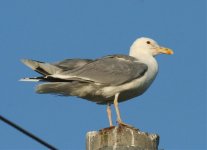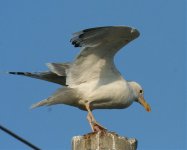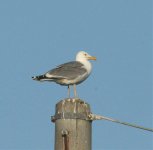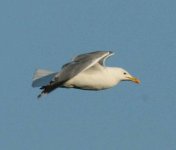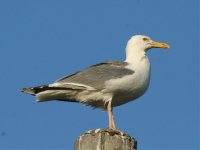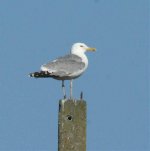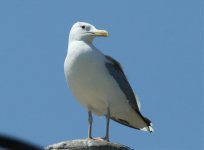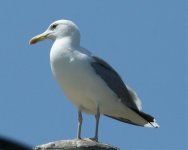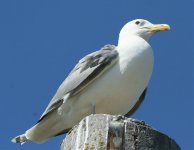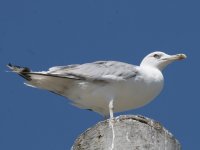JANJ
Well-known member
Could be a hybrid Caspian x Herring as suggested but a pure Herring - perhaps not -although structurally it would fit one. However, I don´t see a pure Caspian structurally (good fit on plumage for 2cy type Caspian), large head, wrong bill structure, especially to short-billed if a male, short primary projection and rather short legs, although some Caspian looks shorter-legged - both in the field and in images. 'Bump' behind the legs Caspian feature alright.
http://www.xs4all.nl/~daarruud/cachinnans3b.html
http://waarneming.nl/foto/view/572763
http://www.iesmeulmeester.nl/fotos.php?actie=subcat&cat=1&subcat=2&kj=2
Harry - I can´t say anything about the number of 2-3cy Caspians lacking the mirroron p10, but it is a variable character, most of which I have seen have had a mirror, from very small - hardly noticeable, to quite large, clearly visible.
No mirror on this one:
http://www.xs4all.nl/~calidris/caspian3w2.htm
Note similarities on this one to the subject gull, but also note structurally differences, as mentioned above.
http://www.xs4all.nl/~calidris/caspian5w2.htm
JanJ
http://www.xs4all.nl/~daarruud/cachinnans3b.html
http://waarneming.nl/foto/view/572763
http://www.iesmeulmeester.nl/fotos.php?actie=subcat&cat=1&subcat=2&kj=2
Harry - I can´t say anything about the number of 2-3cy Caspians lacking the mirroron p10, but it is a variable character, most of which I have seen have had a mirror, from very small - hardly noticeable, to quite large, clearly visible.
No mirror on this one:
http://www.xs4all.nl/~calidris/caspian3w2.htm
Note similarities on this one to the subject gull, but also note structurally differences, as mentioned above.
http://www.xs4all.nl/~calidris/caspian5w2.htm
JanJ




